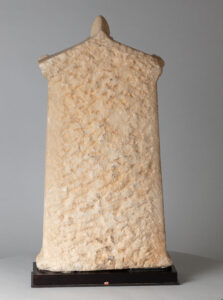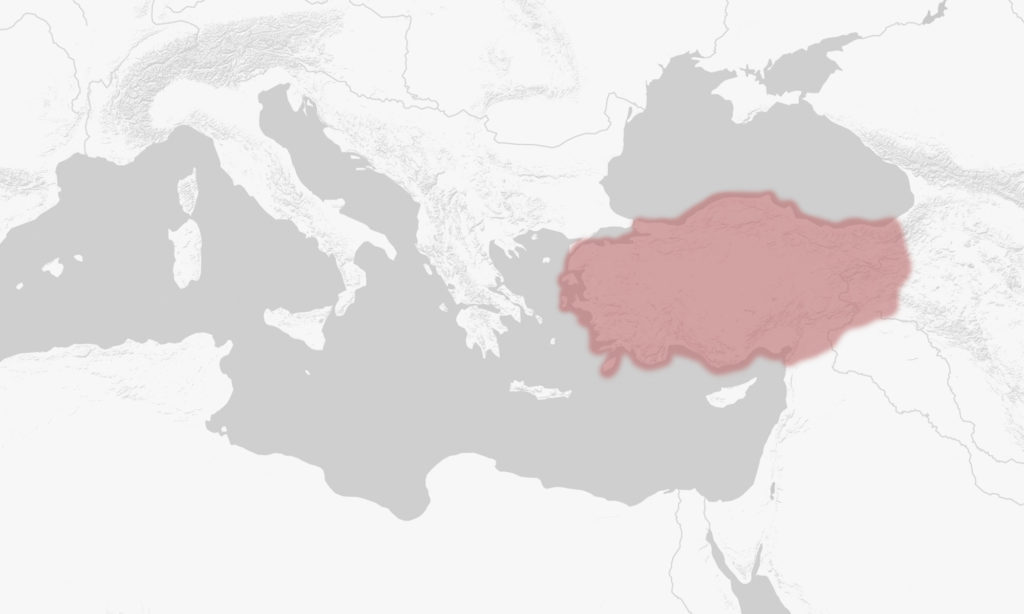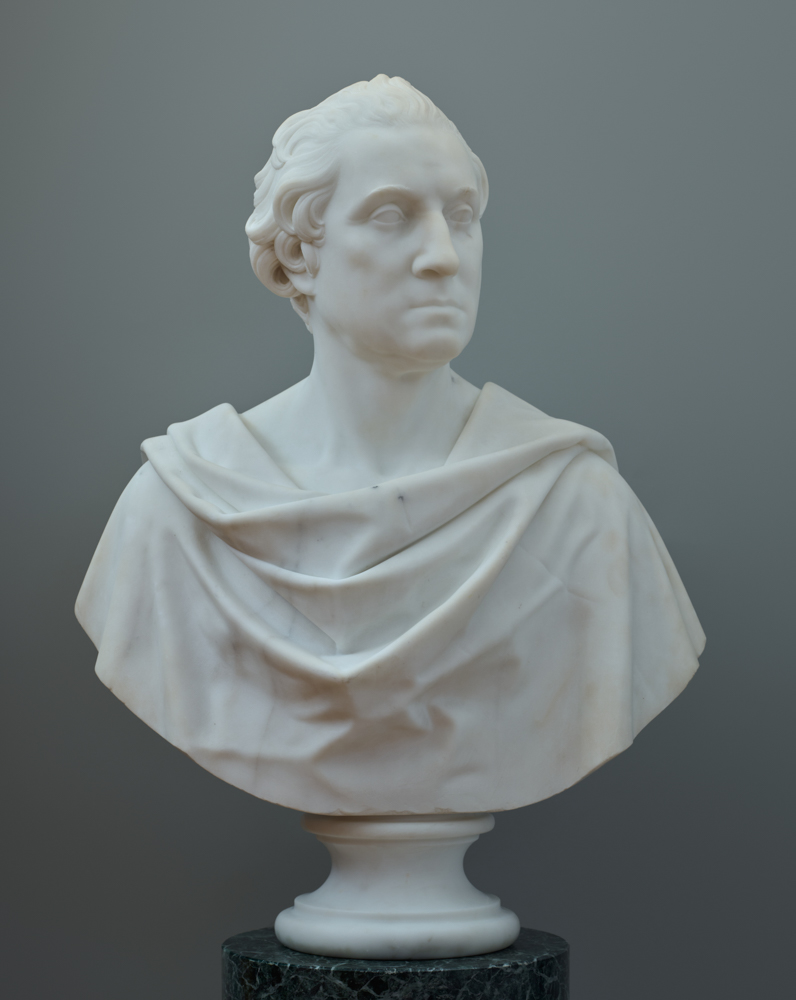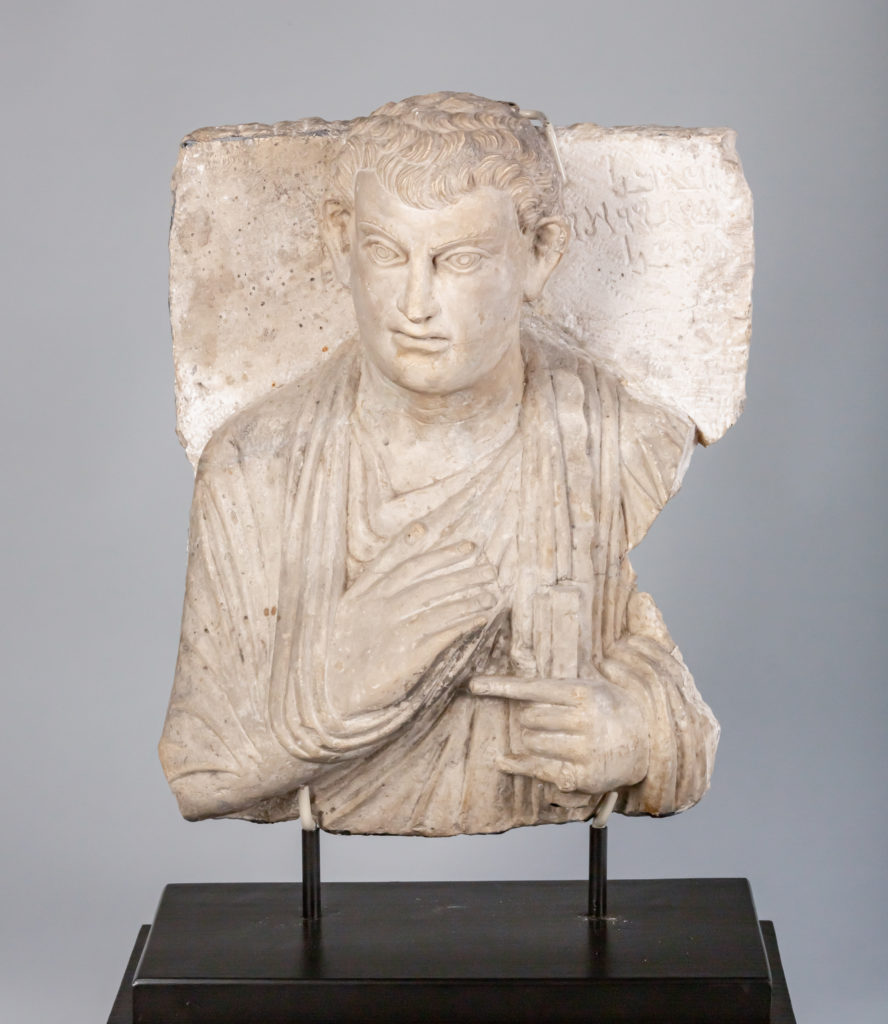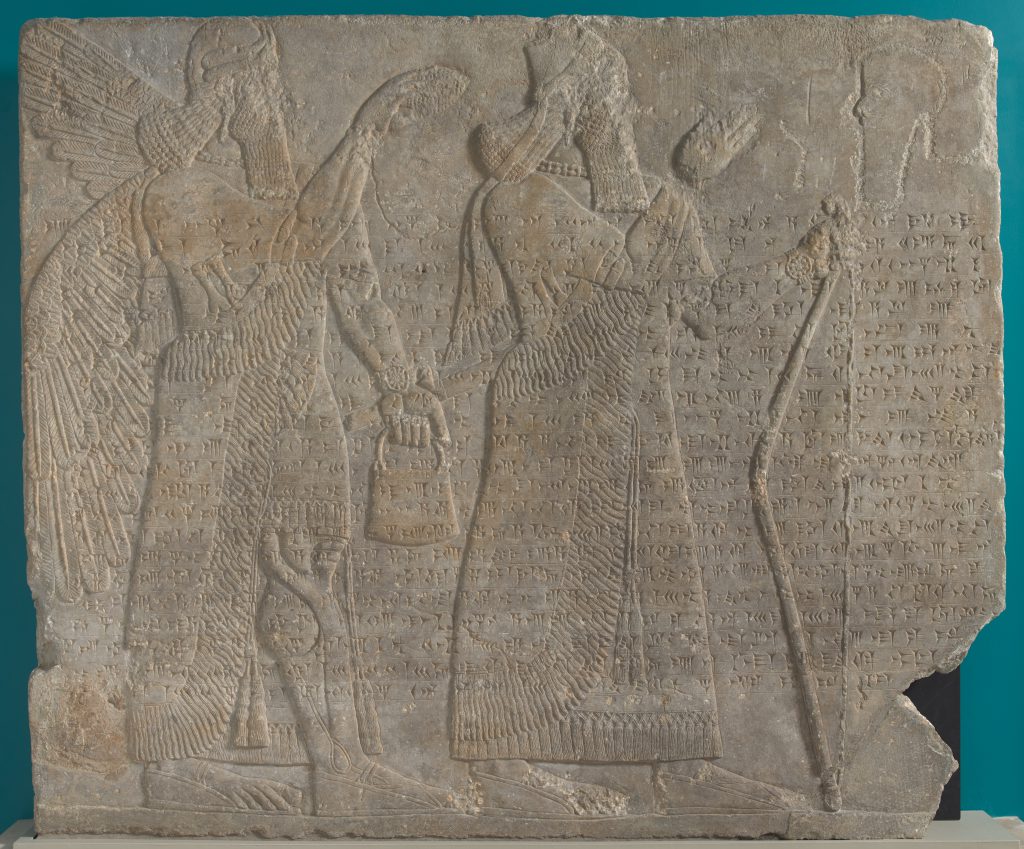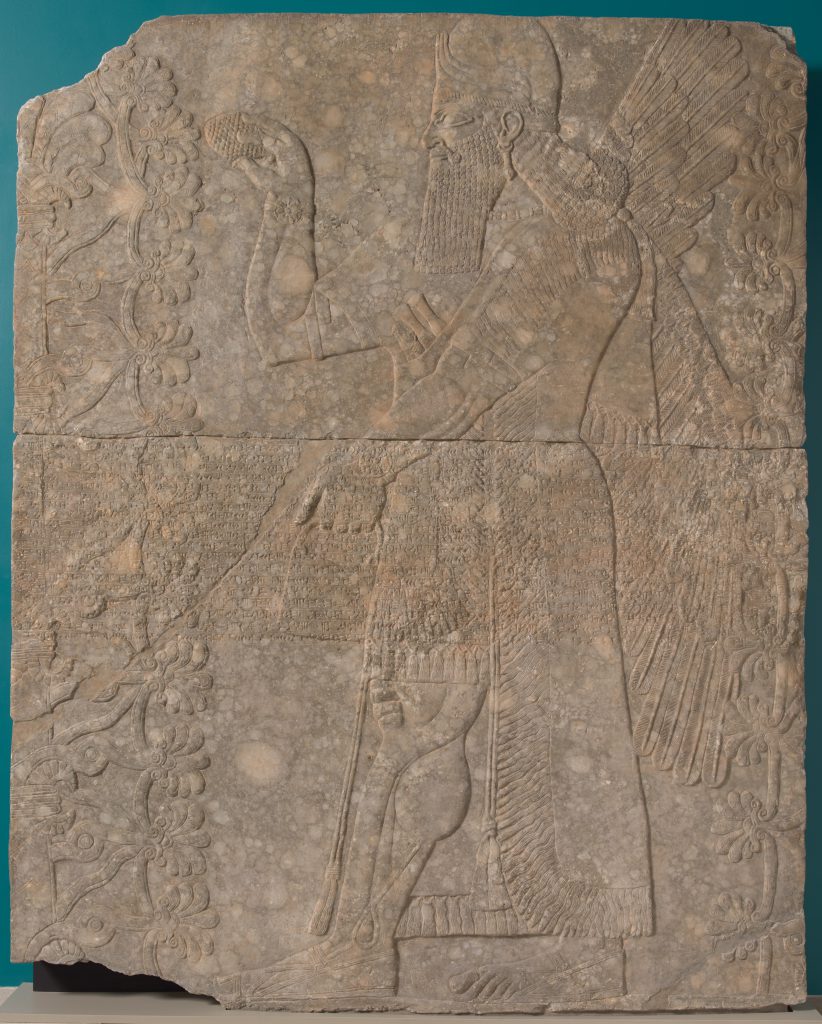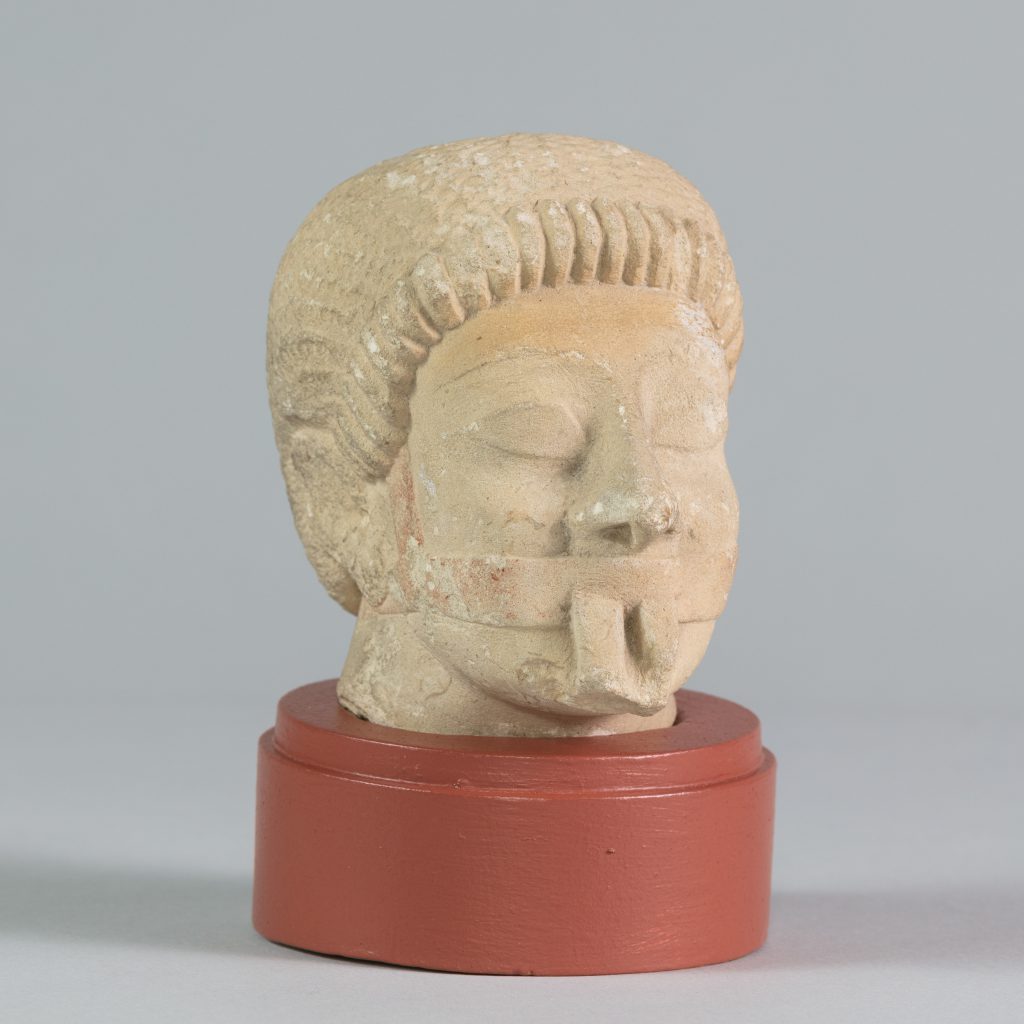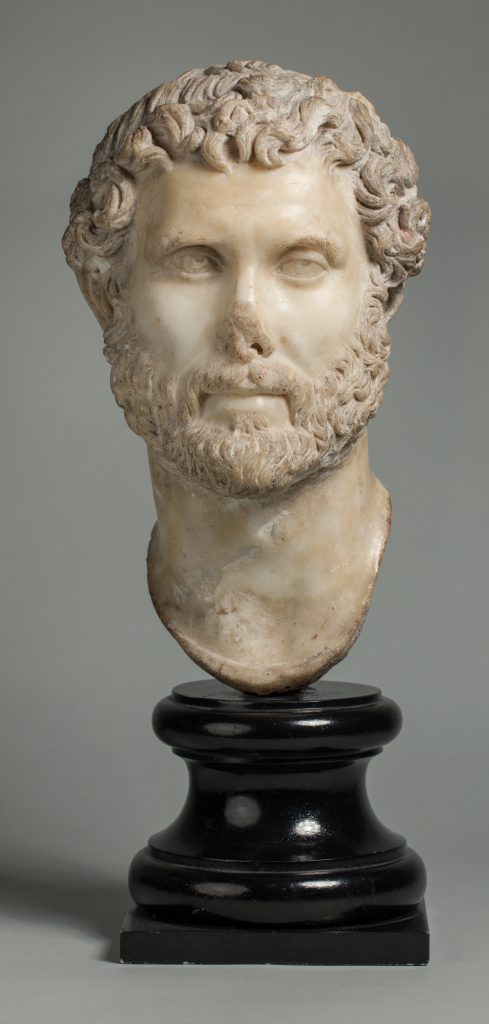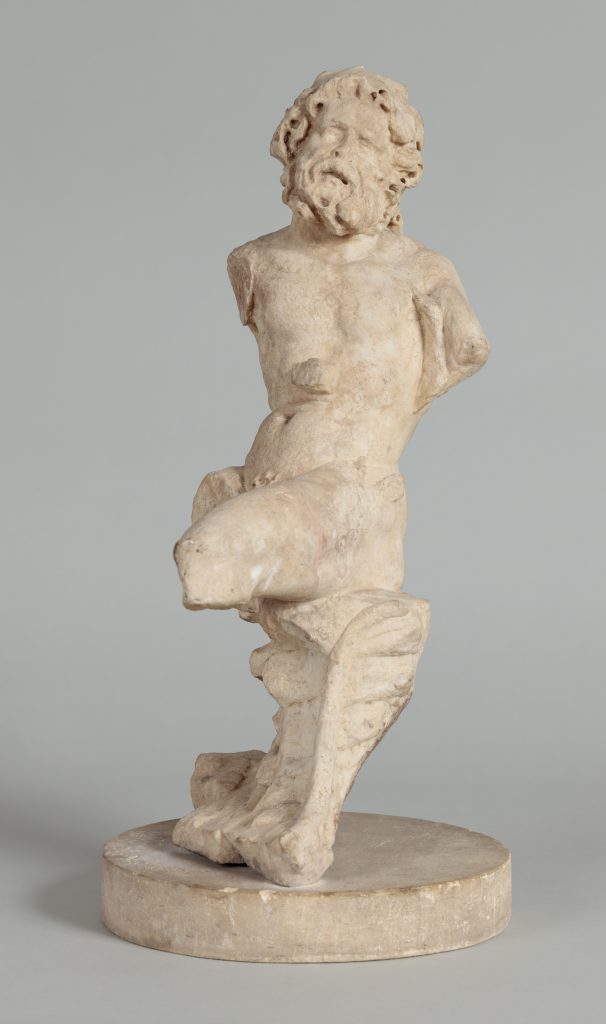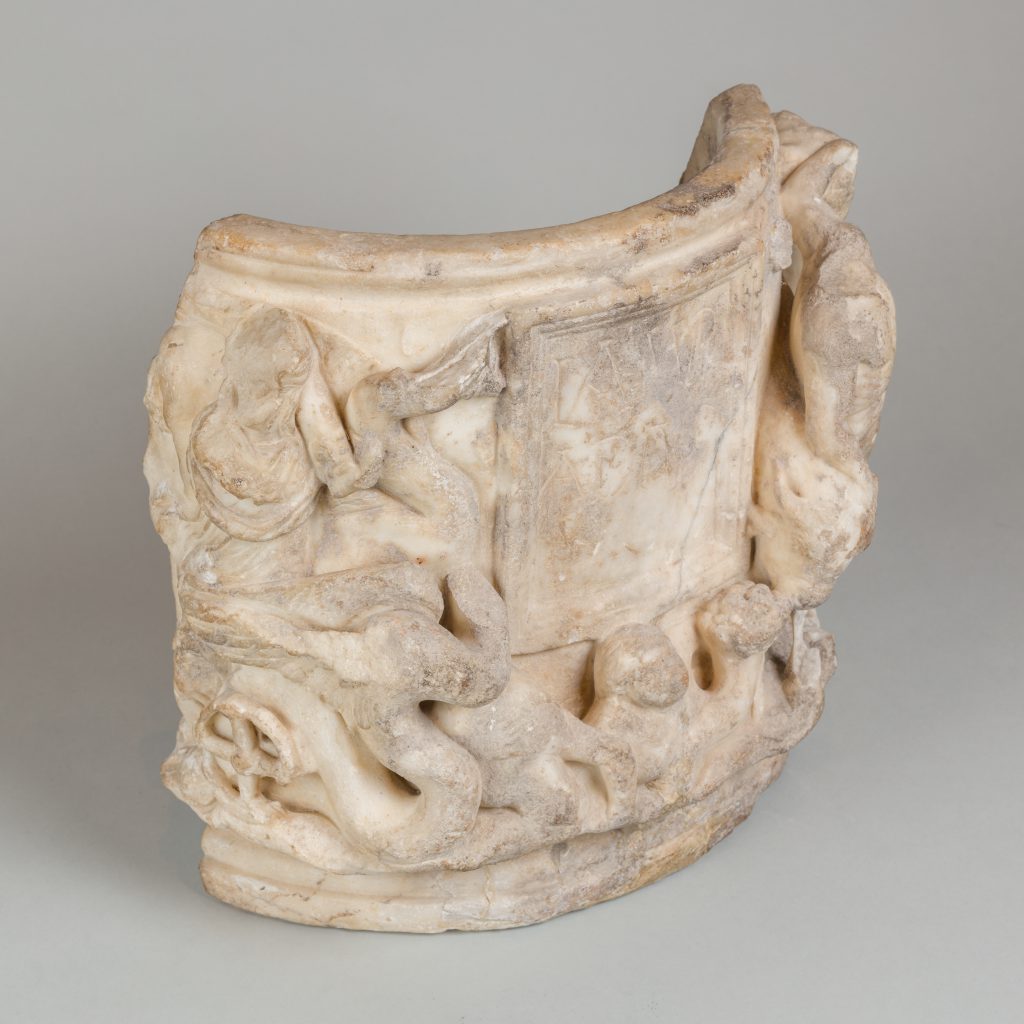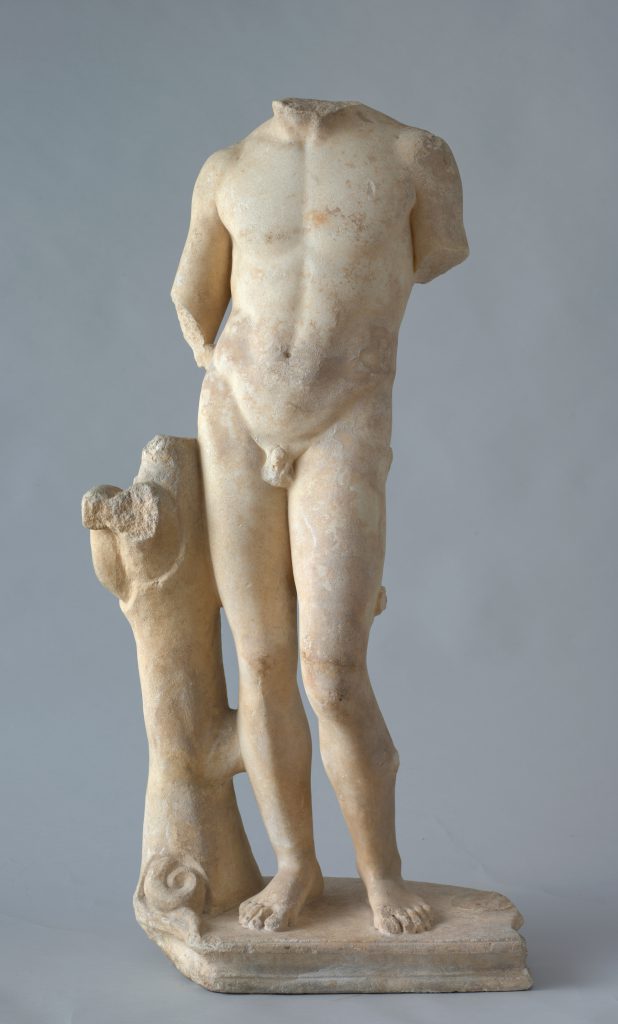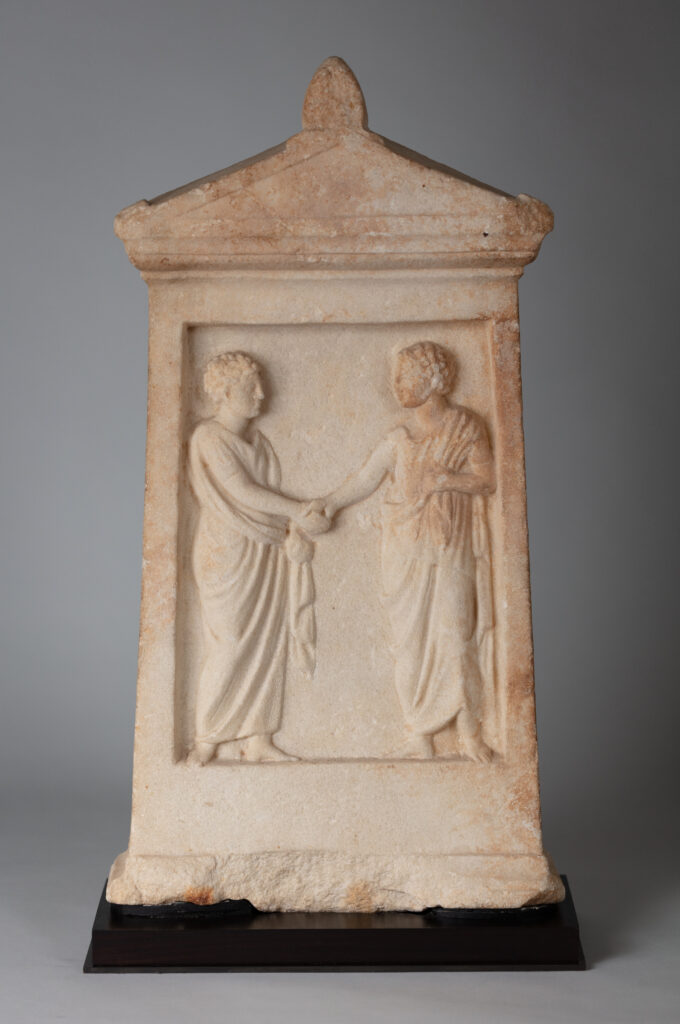
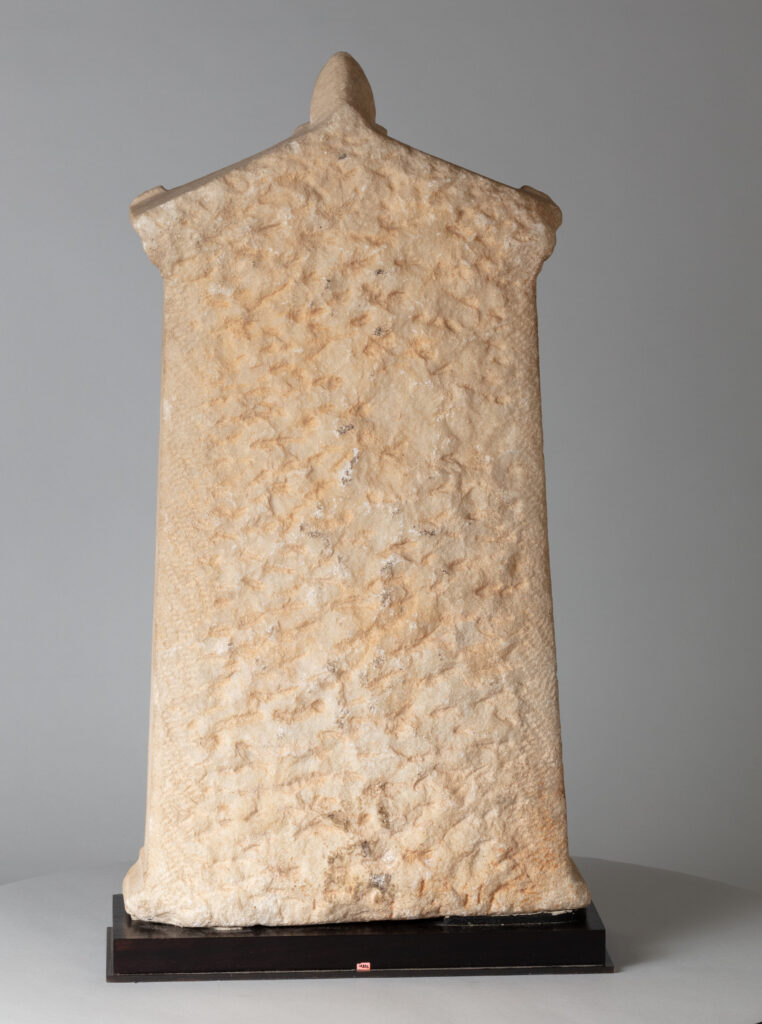
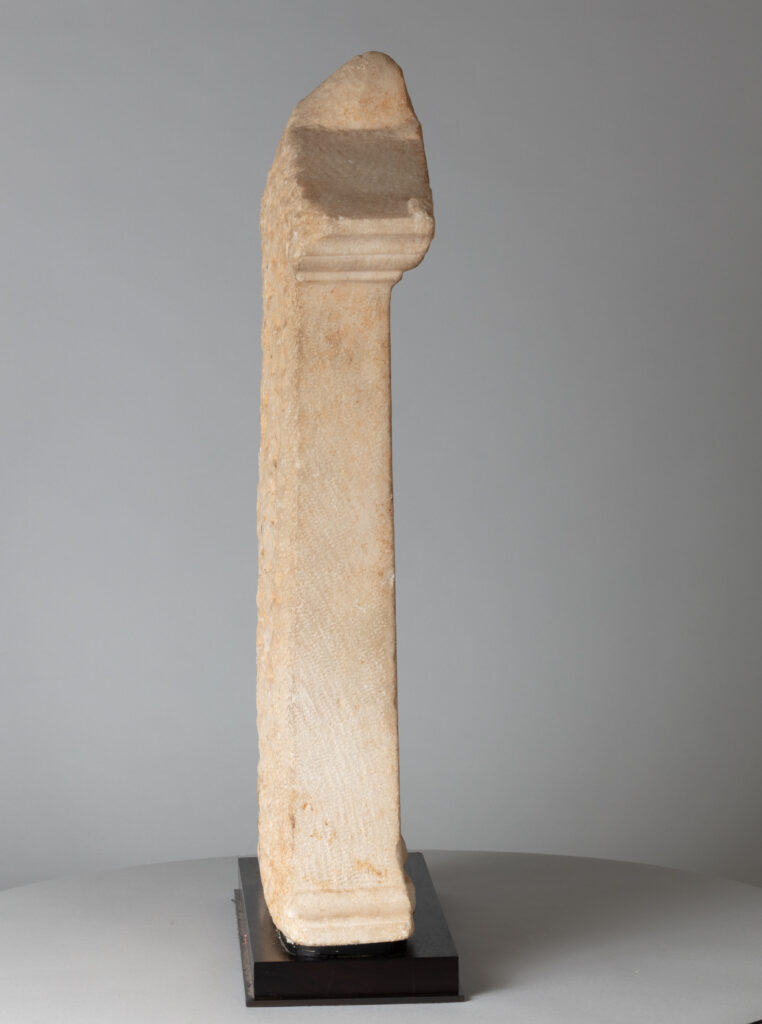
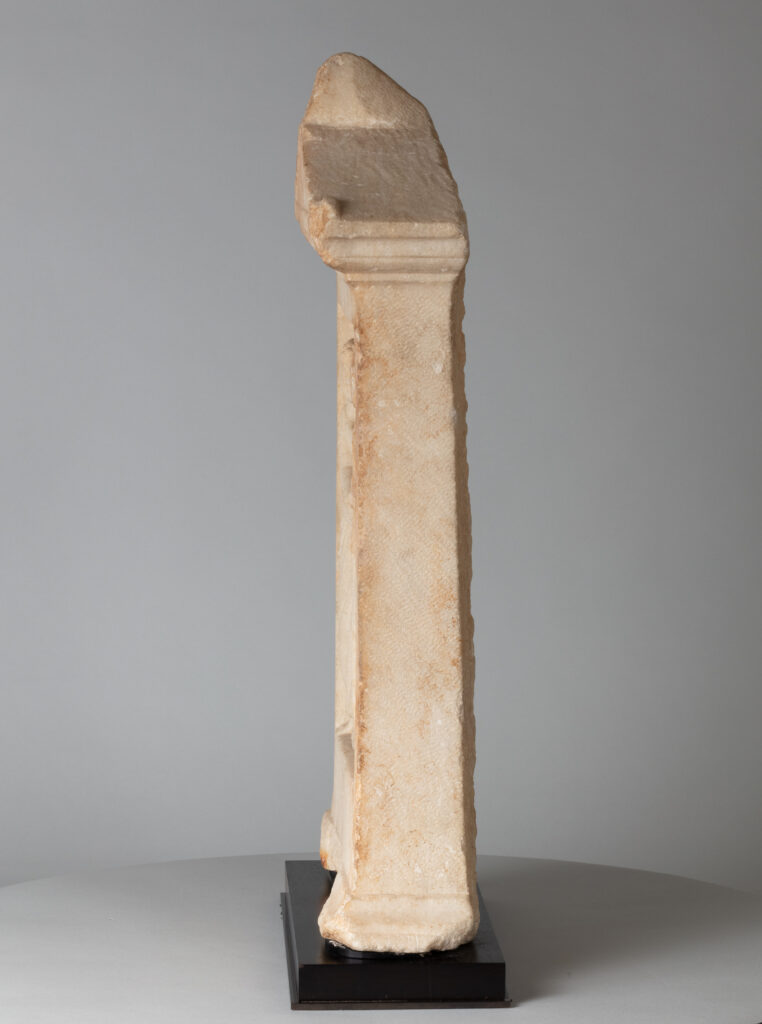
Museum purchase, Lloyd O. and Marjorie Strong Coulter Fund and the Adela Wood Smith
2020.54Greek funerary sculptures like this stele, which served as a grave marker in antiquity, stand as poignant memorials to individual Greek lives and powerful witnesses to the Greeks’ achievements in the sculptural arts. Featuring an intimate relief panel of two youths shaking hands, this stele’s carving most likely depicts brothers. Each wears a chiton and himation, has short-cropped curly hair, and is barefoot. Of the pedimental naiskos form, the stele is also representative of important Greek architectural forms. Elements of the relief and the pediment were likely painted originally, and an inscription identifying the deceased may have been painted below the relief. Dating to the Hellenistic period—during which the funerary arts expanded socially, economically, and geographically—this stele was carved in Ionia (western Turkey) at the intersection of Greek and Persian cultures, which marked the center of the Hellenistic world.
Among the surviving sculptures from the Greek world, marble funerary sculptures represent the largest portion of extant artifacts; many thousands of funerary sculptures have been discovered from Greek lands. As such, Greek funerary sculpture, and particularly Greek funerary stele bearing portraits of the deceased and their kin, are today one of the most recognizable Greek artifacts and bear powerful witness to the achievements of the Greeks in the sculptural arts. The continued popularity of Greek funerary sculpture derives not only from the great number of surviving examples and their representation in major collections, but also, as funerary objects, they are uniquely powerful testaments to Greek culture and poignant memorials to individual Greek lives.
The specific form of the stele, known as a pedimental naiskos, is one of the most popular and well-known types of Greek funerary stele. Characterized by a scene carved in relief, framed by architectural elements and surmounted by a pediment, the naiskos occupied the higher end of the ancient market in funerary sculpture. Aesthetically, the naiskos form is only exceeded by the flowering plant-inspired acanthus stele. The scene is illustrative of the kind of family scenes common to Greek funerary reliefs, and it is executed in a style that, although Hellenistic in date, is conservative and classicizing.
This stele was acquired in 1921 by Joseph Brummer, a prominent dealer in both antiquities and modern art. Brummer opened his gallery in Paris in 1906 but closed at the start of WWI and, in 1921, relocated operations to New York, where this stele was prominently displayed as one of the first pieces on offer in the new location. Brummer’s New York gallery became renowned for its wide-ranging and groundbreaking exhibitions of ancient, medieval, and modern art and was patronized by major collectors and institutions. The stele remained in Brummer’s New York gallery for some time, and photos of the piece installed in the gallery’s street facing windows, as well as accession cards that track the movement and sale of the piece, are among the gallery archives held at the Metropolitan Museum of Art. In 1930, the piece was sold to Mina Merrill Prindle, for the decoration of the Prindle estate in Duluth, Minnesota, interiors from which are now held by the Minneapolis Institute of Art.
Prior to 1921 with Brimo de Laroussilhe, Paris (gallery established 1908); June 27th, 1921, acquired by Joseph Brummer, New York; June 4th, 1930, sold to Mina Merrill Prindle, Duluth, Minn.; thence by descent; 2020, acquired by BCMA from Charles Ede, London.

